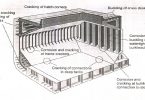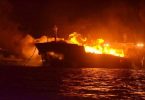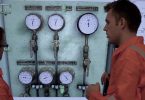Drills:-
Every crew member shall participate in at least one abandon ship drill and one fire drill every month. The drills of the crew shall take place within 24 h of the ship leaving a port if more than 25% of the crew have not participated in abandon ship and fire drills on board that particular ship in the previous month. When a ship enters service for the first time, after modification of a major character or when a new crew is engaged, these drills shall be held before sailing. The Administration may accept other arrangements that are at least equivalent for those classes of ships for which this is impracticable.






